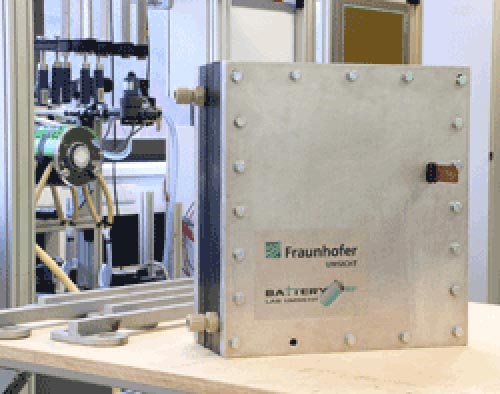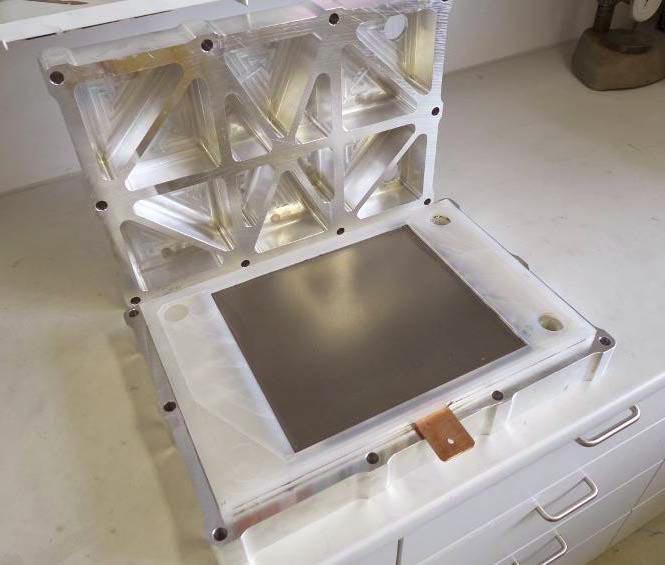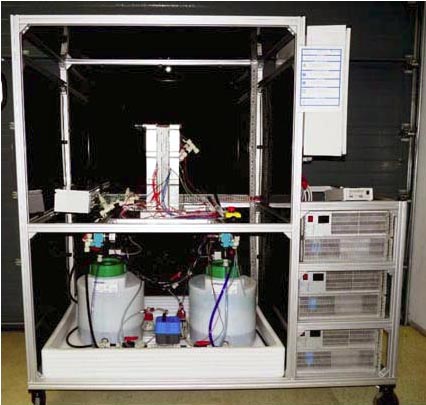20-foot-tall redox flow batteries could provide 20 MWh
Green energy would be greatly helped along if we just had some storage capability for periods when it is dark or there is no wind. One possible solution is a redox flow battery that can supply energy for up to 2,000 households. Several Fraunhofer Institutes (www.fraunhofer.de) are working jointly on these fluid batteries of the future.
 |
| The redox flow stack prototype with a 1-kW output. |
The experts‘ long-term goal is to build a handball-court-sized battery installation 20 feet tall with a capacity of 20 MWh enough to provide power to roughly 2,000 households through a long winter‘s night or a cloudy day. “The process already works reliably,” notes Dr. Christian Dötsch, business unit manager for Energy Efficiency Technologies at UMSICHT, one of the participating institutes. “The challenge lies in the enlargement of these plants.”
Redox flow batteries are large-scale vanadium-based liquid batteries in which chemical vanadium bonds alternately pick up and emit electrons along membranes. Because these batteries use only vanadium bonds and not two different fluids at the same time, as in other systems, impurities are eliminated. “This makes it possible to build very robust and durable batteries,” emphasizes Dr. Tom Smolinka, in charge of coordinating the work at the Fraunhofer Institute for Solar Energy Systems.
The vanadium charges and discharges in tiny reaction chambers. Several of these chambers are arrayed in stacks to increase output. Currently, the membranes and hence the individual cells have a surface area roughly equal to that of a DIN A4 sheet of office paper. One of the challenges is to ensure that the vanadium fluid flows smoothly through these large membranes and past the felt-like carbon electrodes in the cells themselves. Fraunhofer researchers are using flow simulations to further improve the design of the cells. A 20-kW plant is scheduled to go into operation at the end of next year. The researchers hope to cross the megawatt threshold in roughly five years.
 |
 |
| VRFB stack with an active area of 700 cm2. |
Laboratory test system of a 1 kW VRFB which is used for stack and system characterization and evaluation of simulation results. |
Research on this type of battery has been going on for more than 25 years. Ashlawn Energy in Alexandria, VA, Renewable Energy Dynamics (RedT) in Ireland, Cellstrom GmbH in Austria, Cellennium in Thailand, and Prudent Energy in China are all working on some form of vanadium redox battery and some have units up to 100 kWh available now.
